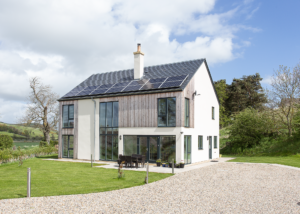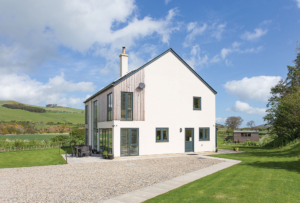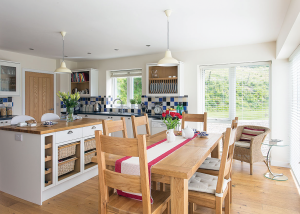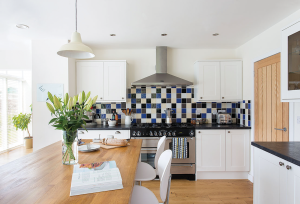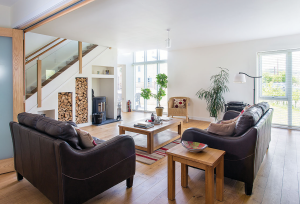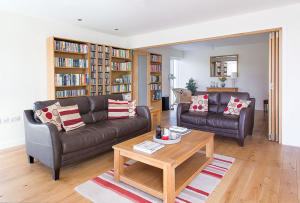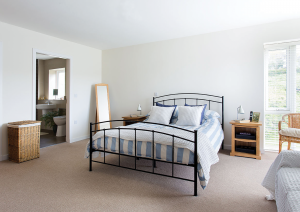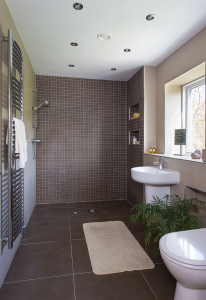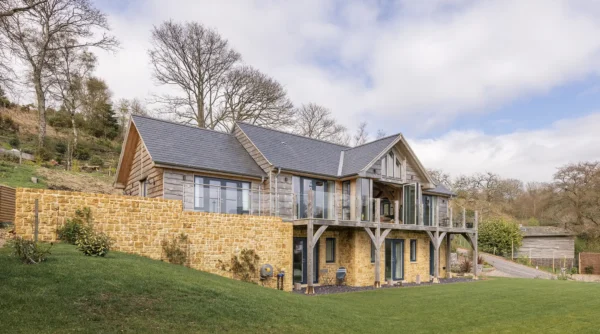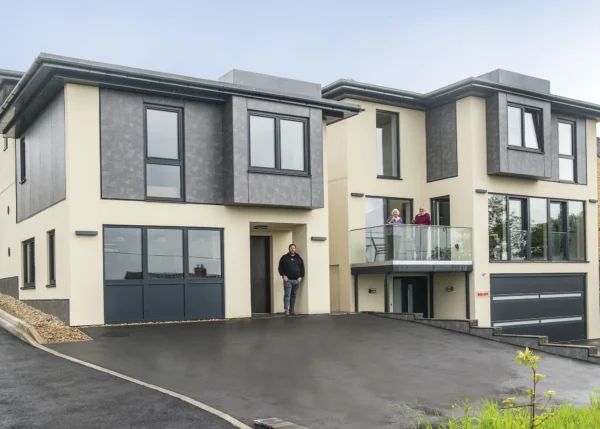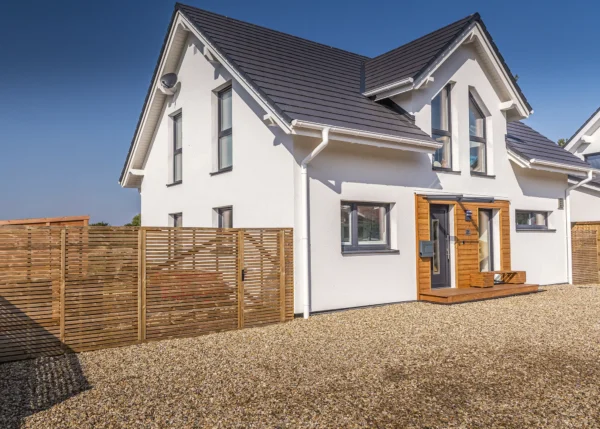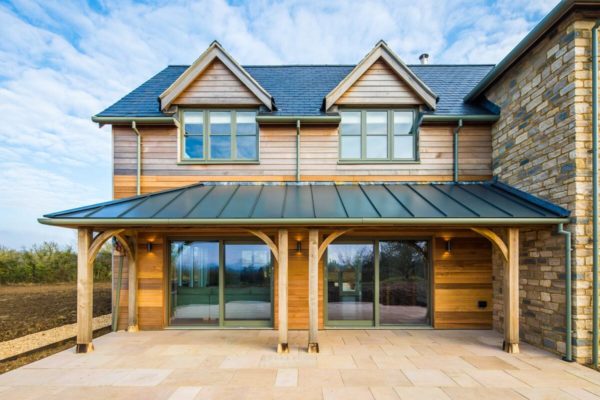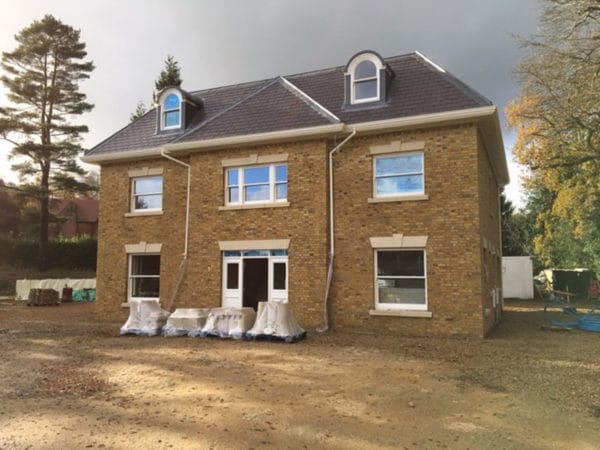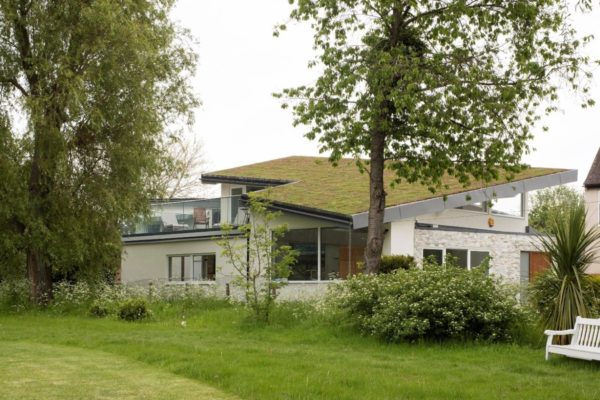Light-Filled Sustainable Home For Life
Andrew and Elaine Torrance enjoyed their current home’s village location, but had fallen out of love with the dark Victorian terraced house they had bought 20 years earlier. So they set out to look for something different.
Andrew suffers from rheumatoid arthritis so the challenge wasn’t just about finding a beautiful new property; they needed a flexible home that would easily adapt to his needs as the years progressed. “With rheumatoid arthritis, even the most basic tasks – such as standing, bending, climbing the stairs and walking around – become more difficult,” he says.
Their priority was finding a warm, light and easy-to-maintain house with amenities close by. Having struggled to track down a property that met these criteria, the couple investigated the possibility of self-building somewhere. “It was really the last thing we wanted to do,” says Andrew, “but we couldn’t find anything that we liked for sale. So upon hearing of a plot of land just on the outskirts of the village that was about to come on the market, we thought perhaps we could create something ourselves.”
Finding an architect
In the summer of 2008 Andrew and Elaine approached the owner of the plot, who was happy to agree a price. They then applied for a mortgage, which allowed them to buy the land, and put their house up for sale.
- NameAndrew & Elaine Torrance
- LocationScottish Borders
- ProjectSelf-build
- StyleContemporary
- Construction methodTimber frame
- Plot cost£95,000
- House size194m²
- Build cost£274,980
- Build cost per m²£1,417
- Total cost£370,000
- Construction time36 weeks
The Torrances were unable to finance their new build until they had managed to sell off their current property, so in the meantime they set out to find an architect who would be able to design the new house and apply for planning permission, too.
Having met with several practices, the couple settled on engaging the services of local professional, Keith Renton, who specialises in creating energy efficient homes. Both Elaine and Andrew were reassured by his manner and knowledge. “Elaine and I are both a little conservative in our tastes and we wanted a traditional house built in a contemporary way – but not too modern, as we’re just not used to that,” says Andrew.
“In drawing up the designs, Keith listened to us carefully and came back with a scheme that was very different to what we had initially imagined, which was a good thing. It delivered on all our needs.” Importantly, the plans incorporated everything that Andrew required in terms of accessibility and more.
With their existing property as yet unsold, the Torrances had lots of time to reflect on Keith’s designs. They even stayed in one of his past clients’ homes. “We knew nothing about energy efficient housing or eco builds so we just wanted to be reassured. By the time we had talked to a few of his customers, we were totally committed to Keith’s plans. It was time well spent,” says Andrew.
Getting underway
The plot had been sold with outline consent for a four-bedroom house. The council were great supporters of Keith Renton’s eco projects, which helped to ensure the scheme sailed through planning permission with very few changes. By the time the Torrances’ property eventually sold three years later, they were in a strong position to progress with the build. “We put our furniture into storage and moved into a rental house nearby,” says Andrew.
Work started on the foundations in May 2012. “The plot was sold with services, but when it came down to it, the electrical supply was not suitable for a residential property. This was an unexpected outlay,” says Andrew. Another unforeseen cost was the sewage pump that the planners insisted the couple fit instead of a septic tank. This directs waste to the mains pipe at the edge of the site.
Andrew was determined to stay on budget and had Keith produce a detailed spreadsheet. When the couple incurred an extra expense or if any aspect of the build increased in cost, they insisted on finding savings elsewhere.
“With the best will in the world, the builder or architect was never going to care about the costs as much as we did. Our message, however, was very clear: the house had to come in on budget,” says Andrew. To help with the smooth running of the project, the couple employed Keith to oversee the scheme from the earliest design stage right through to managing the contractors and finally onto completion.
Fabric first
To help meet Andrew and Elaine’s expectations for an energy-efficient home, Keith positioned the house to maximise solar gain. High levels of thermal protection and airtightness were built into the structure, with the walls and roof of the building constructed using engineered timber framing and packed with Warmcell – a cellulose insulation made of recycled paper.
The windows and doors are timber and triple glazed with a powder coated aluminium cladding, so they require little to no maintenance. A mechanical ventilation and heat recovery system was fitted to reduce the possibility of mould and condensation forming; while also recovering useful warmth from wet zones in the house and repurposing it in fresh incoming air.
A home for the future
The property has been designed for wheelchair access and has an open-plan living room with bifold doors leading to a study behind the space. This has been incorporated so that it could, if needed, be turned into the master bedroom in future. In the corner of this zone is space for a lift shaft, which can be added at a later date. Opposite the study is a large ground floor wetroom.
The only source of direct heat is the woodburning stove, which is set into the staircase to save space. The warmth it generates rises up through the centre of the house. Some of this heat is retained by the blockwork in the wall and gradually released back into the living environment at night as indoor temperatures drop.
“We used to spend over £2,500 a year on oil in our old house and now all we pay for is the logs for the woodburning stove,” says Andrew.
“We were fortunate to have a brilliant workforce on the job. From the architect to the main builder and subcontractors, the skill and quality of finish were second to none. Even though I found the process hard on my health, living in this wonderful house has made a significant difference to me already. It’s very reassuring to know that going forward the benefits will be even greater.”
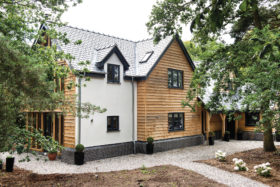
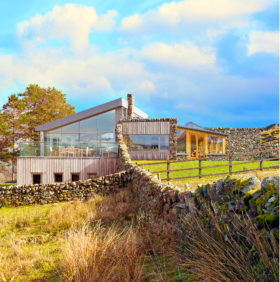



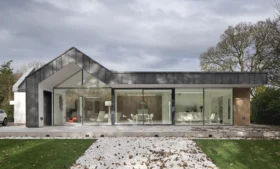


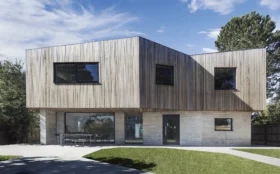








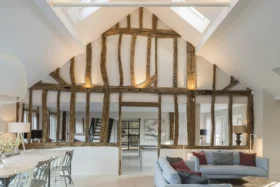
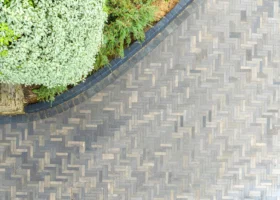















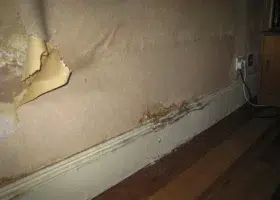















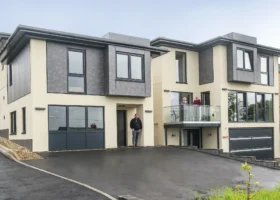













































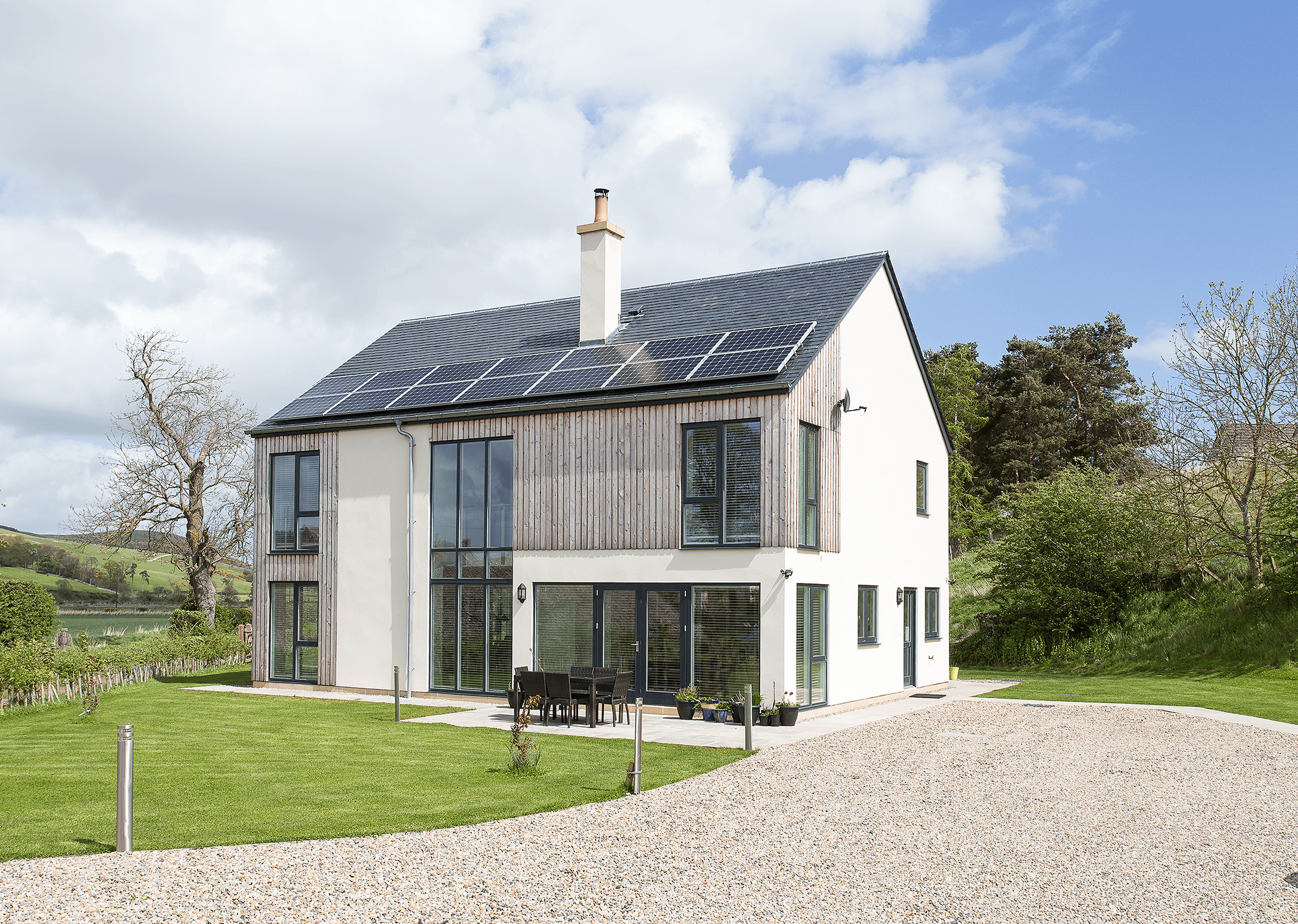
 Login/register to save Article for later
Login/register to save Article for later
